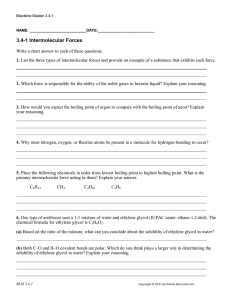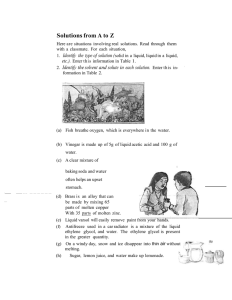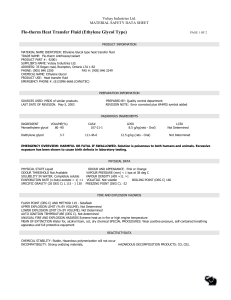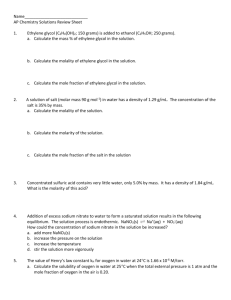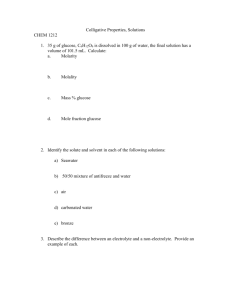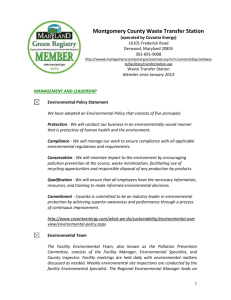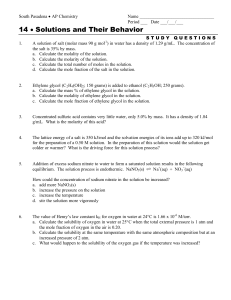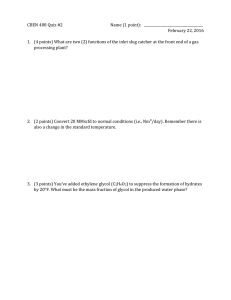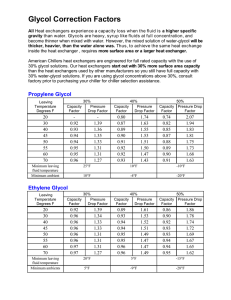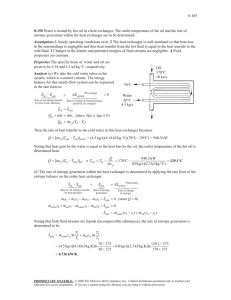6-62 and the mass flow rate of water are to be... to the surroundings is negligible and thus heat transfer from...
advertisement
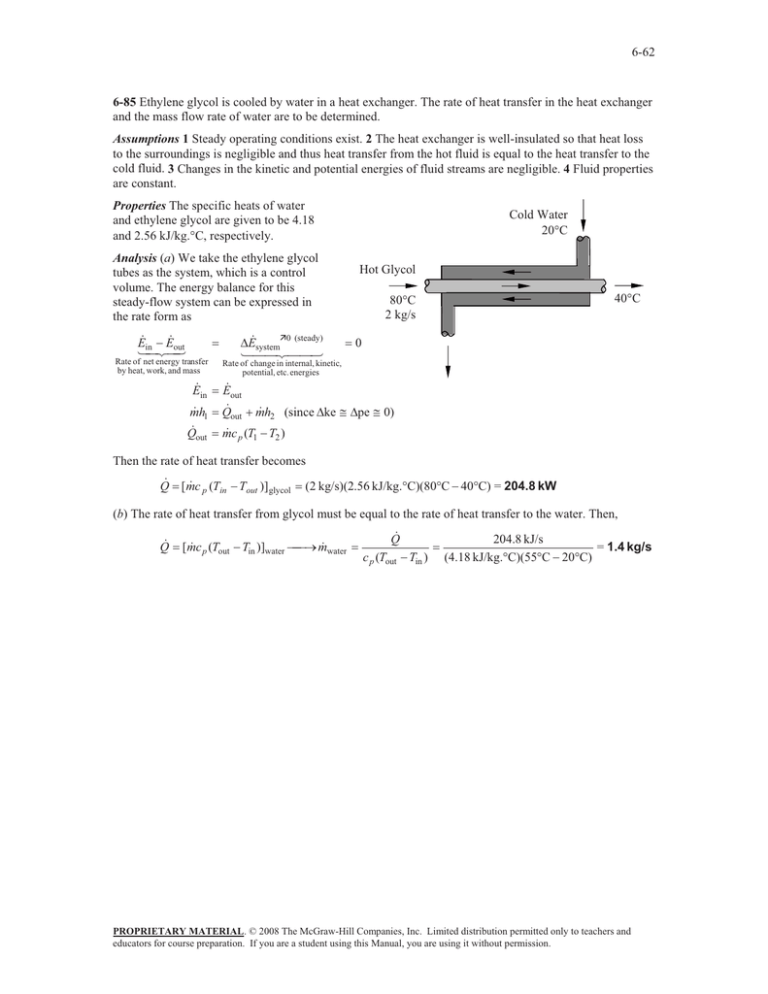
6-62 6-85 Ethylene glycol is cooled by water in a heat exchanger. The rate of heat transfer in the heat exchanger and the mass flow rate of water are to be determined. Assumptions 1 Steady operating conditions exist. 2 The heat exchanger is well-insulated so that heat loss to the surroundings is negligible and thus heat transfer from the hot fluid is equal to the heat transfer to the cold fluid. 3 Changes in the kinetic and potential energies of fluid streams are negligible. 4 Fluid properties are constant. Properties The specific heats of water and ethylene glycol are given to be 4.18 and 2.56 kJ/kg.qC, respectively. Analysis (a) We take the ethylene glycol tubes as the system, which is a control volume. The energy balance for this steady-flow system can be expressed in the rate form as E E out in Rate of net energy transfer by heat, work, and mass E in m h1 Q out 'E systemÊ0 (steady) Cold Water 20qC Hot Glycol 40qC 80qC 2 kg/s 0 Rate of change in internal, kinetic, potential, etc. energies E out Q out m h2 (since 'ke # 'pe # 0) m c p (T1 T2 ) Then the rate of heat transfer becomes Q [m c p (Tin Tout )] glycol (2 kg/s)(2.56 kJ/kg.qC)(80qC 40qC) = 204.8 kW (b) The rate of heat transfer from glycol must be equal to the rate of heat transfer to the water. Then, Q [m c p (Tout Tin )]water o m water Q c p (Tout Tin ) 204.8 kJ/s = 1.4 kg/s (4.18 kJ/kg.qC)(55qC 20qC) PROPRIETARY MATERIAL. © 2008 The McGraw-Hill Companies, Inc. Limited distribution permitted only to teachers and educators for course preparation. If you are a student using this Manual, you are using it without permission.
